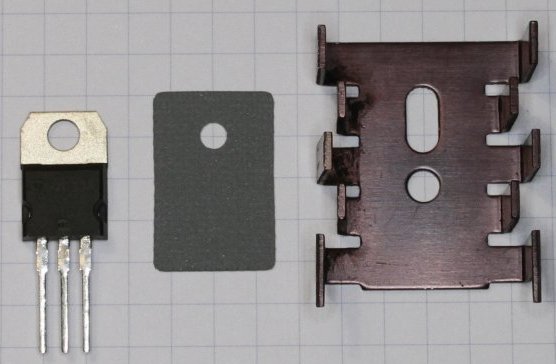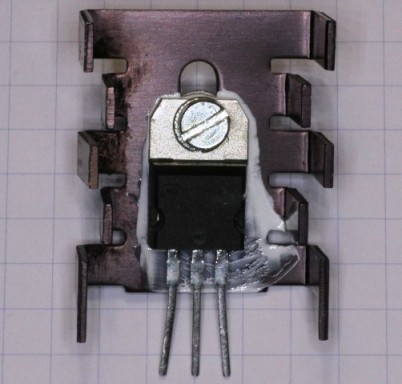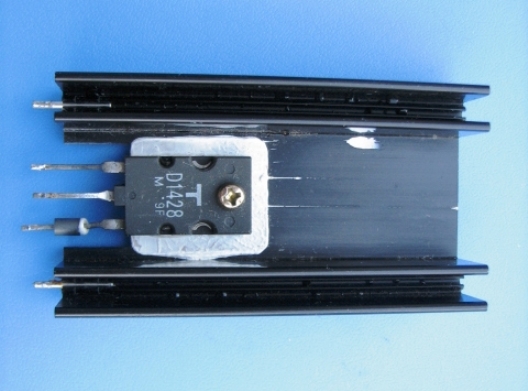Categories: Featured Articles » Practical Electronics
Number of views: 5668
Comments on the article: 0
Inch * degree / watt - what is this radiator parameter?
Approaching the question of choosing a radiator for power transistor or high power diode, as a rule, we already have the result of preliminary calculations regarding the power that the component will need to dissipate through the radiator about the surrounding air. In one case, it will be 5 watts, in the other 20, etc.
To dissipate more power, you need a radiator with a larger surface contact area with air, and if for the same transistor operating in the same mode, take a smaller radiator, then the radiator will be more heated.
Thus, the statement is true for the same key: the larger the surface area of the radiator in contact with air, the more heat will be dissipated, and the less the radiator will heat up. That is, the longer the radiator and the more branched its profile is, the better it will dissipate heat and, accordingly, will heat up less.
If for example we consider two radiators made of a profile of the same size and shape, but of different lengths, then a longer radiator will dissipate heat faster than a shorter one. It is precisely with this provision that the inch * degree / watt parameter, normalized for most radiators on the market today, and called the "specific thermal resistance", is closely related. In this parameter there is no data on the area, for that is, data on the length.

The essence of this quantity
Inch * degree / watt - the value used forcibly. It is not specific to the radiator, and to the metal profile, in fact - to the shape of the profile, to the transverse dimensions of the metal profile, from which this piece under the name "radiator" is cut off. A 1-inch radiator will have twice the degree / watt of a 2-inch radiator made of the same metal of exactly the same profile.
A twice shorter radiator will heat up twice as many degrees relative to the surrounding air at the same thermal power transmitted to it. And so that the 2-inch radiator in our example heats up in the same way as the 1-inch radiator from the same profile, you will need to supply twice as many watts in the form of heat to it.

Thus, we get a simple interpretation regarding the parameter inch * degree / watt, indicated for a particular radiator. This parameter shows how many inches of radiator (in length!) Of the selected profile must be used in order to obtain a temperature difference of 1 ° C between the surface of the radiator and the surrounding air with continuous dissipation of power of 1 watt. Obviously, this parameter is applicable only to those radiators whose profile (cross-sectional shape) is the same along the entire length.
Let’s ask, for example, the number of watts that must be dissipated. Let us set the temperature difference, which must be obtained between the surface of the radiator and air - this is the thermal resistance.
Now, knowing the inch * degree / watt parameter, we can easily calculate the required radiator length by simply dividing it by the obtained thermal resistance. So we were convinced that the parameter inch * degree / watt is a parameter of the radiator profile, which in itself is in no way connected with its length. You can simply divide this parameter by the length of the existing radiator in inches and thus accurately obtain the value of its thermal resistance.

Calculation Example
Suppose there is a radiator with the parameter "thermal resistivity" equal to 3.1 inches * degrees / watt. A radiator length of 100 mm is 100 / 25.4 = 3.937 Inches. Divide 3.1 by the length in inches: 3.1 / 3.937 = 0.7874 (degrees / watt) - this is the thermal resistance of the radiator Rt. How many watts do you need to dissipate?
Let's say P = 20 watts.How long does the selected radiator heat up relative to the ambient temperature?
dt = Rt * P = 20 * 0.7874 = 15.74 ° C.
That is, if our radiator is in the open air and heat power of 20 W is supplied to it, and the air temperature is + 25 ° C, then the temperature of the radiator will be 25 + 15.74 = 40.74 ° C.
See also at i.electricianexp.com
:
